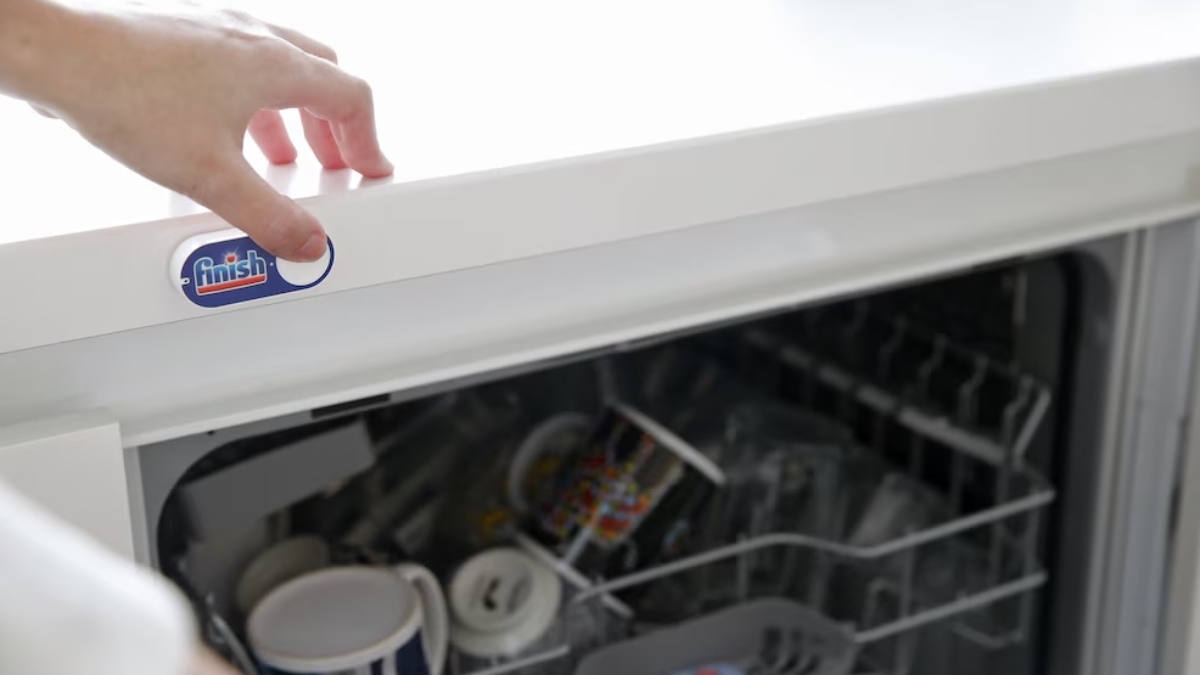The dishwasher is an indispensable appliance in many homes, relieving the daily burden of washing dishes and kitchen utensils. However, although its main task is to clean, the appliance itself needs regular maintenance to function efficiently. Over time, food residues, soap, and minerals accumulate, which can generate bad odors or reduce performance. Keeping the inside of the dishwasher clean not only extends its lifespan but also ensures that each wash cycle is effective. In this article, we present some simple tricks to clean the inside of the dishwasher and keep it in the best con
1. Clean the filter
One of the most important components of your dishwasher is the filter, responsible for trapping food residues that could clog the drainage system. To avoid bad odors or blockages, it is advisable to clean it at least once a month. The filter is generally located at the bottom of the dishwasher, underneath the spray arms. Remove it carefully and rinse it under the tap.
This step, although basic, is crucial, since a clogged filter prevents water from flowing correctly, which can cause your dishes not to be as clean as they should be. Furthermore, if food residues accumulate too much, they can generate bad odors inside.
2. Clean the spray arms
The spray arms are responsible for distributing pressurized water inside the dishwasher. With frequent use, the small holes where the water comes out can become clogged with food residues or mineral deposits. To clean them, remove the arms (if the model allows it) and use a toothpick or a thin wire to unclog the blocked holes.
3. White vinegar for a deep cleaning
White vinegar contains between 4% and 7% acetic acid, which makes it a good degreaser and residue remover. To clean the dishwasher, you simply have to fill a glass or a dishwasher-safe container with white vinegar and place it inside. Besides cleaning grease and residues, white vinegar is extremely effective at neutralizing bad odors, so it is recommended to carry out this cleaning at least once a month.
White vinegar is also ideal for removing limescale and mineral deposits. In this case, you can use it in the same way as you would to remove grease, running a cycle with the dishwasher empty and the vinegar on the top rack. If the deposits are very severe, you might need to repeat this process or combine it with a specific descaler for dishwashers.
Although white vinegar is very effective, it is important to use it correctly to avoid possible damage. Its high acidity can, over time, deteriorate some rubber or metal parts if used excessively. Therefore, it is not advisable to use vinegar in every wash cycle, but only as part of monthly maintenance.
4. Baking soda to neutralize odors
To take full advantage of this benefit, you simply need to sprinkle a cup of baking soda on the bottom of the empty dishwasher, and then run a short cycle with hot water. Baking soda is an excellent cleaner to remove stubborn residues.
Its application is simple: after having done a cleaning with white vinegar to dissolve grease and minerals, you can do a second cleaning with baking soda. This double process ensures that the inside of the dishwasher is not only free of residues and odors but also shiny and spotless.
Although baking soda is effective on its own, many households choose to combine its use with white vinegar. Therefore, the best practice is to first run a wash cycle with white vinegar to remove grease and disinfect, and then do a second cycle with baking soda to neutralize odors.
5. Clean the rubber seals and the interior walls
The rubber seals, also known as gaskets, are essential for the proper functioning of the dishwasher, as they prevent water from leaking during the wash cycle. However, these areas, which are constantly exposed to moisture, are prone to accumulating food residues, mold, and soap scum. To keep them in good condition, it is advisable to clean them every two weeks with a soft cloth, and you can also use an old toothbrush.
This maintenance not only prevents bad odor inside the dishwasher, but also ensures that the door seals properly, preventing water leaks during the operation.
6. Descaling with specific products
Descaling the dishwasher consists of removing limescale and mineral deposits that accumulate inside the appliance due to the use of hard water. Over time, these deposits can affect the dishwasher’s performance, reduce its energy efficiency, and shorten its lifespan. Descaling products are formulated with acidic agents, such as citric acid or sulfamic acid, which dissolve the limescale without damaging the internal parts of the appliance. These products are generally applied following these steps:
- Empty the dishwasher: the process should begin with the dishwasher empty, without dishes or utensils.
- Application of the product: depending on the type of descaler, it may come in liquid, powder, or tablet form. It is placed in the detergent compartment or directly at the bottom of the dishwasher.
- Cleaning cycle: a high-temperature wash cycle is run (normally without additional detergent) so that the product acts on the limescale residues in the pipes, filter, and internal walls.
- Rinse: after the cycle, it is recommended to run another short rinse cycle to eliminate any product residue.
7. Leave the door slightly open after each use
Leaving the dishwasher door open after use allows the interior to ventilate, which helps prevent the accumulation of moisture and, consequently, the appearance of bad odors and mold. The circulation of air allows excess moisture to evaporate, keeping the dishwasher drier and cleaner.
In addition, by reducing moisture, it prevents water residues from stagnating at the bottom of the appliance or in the door seals, which also helps to prevent the buildup of limescale and the deterioration of internal components due to corrosion. This practice is especially useful in humid climates or if the dishwasher is not used frequently.
